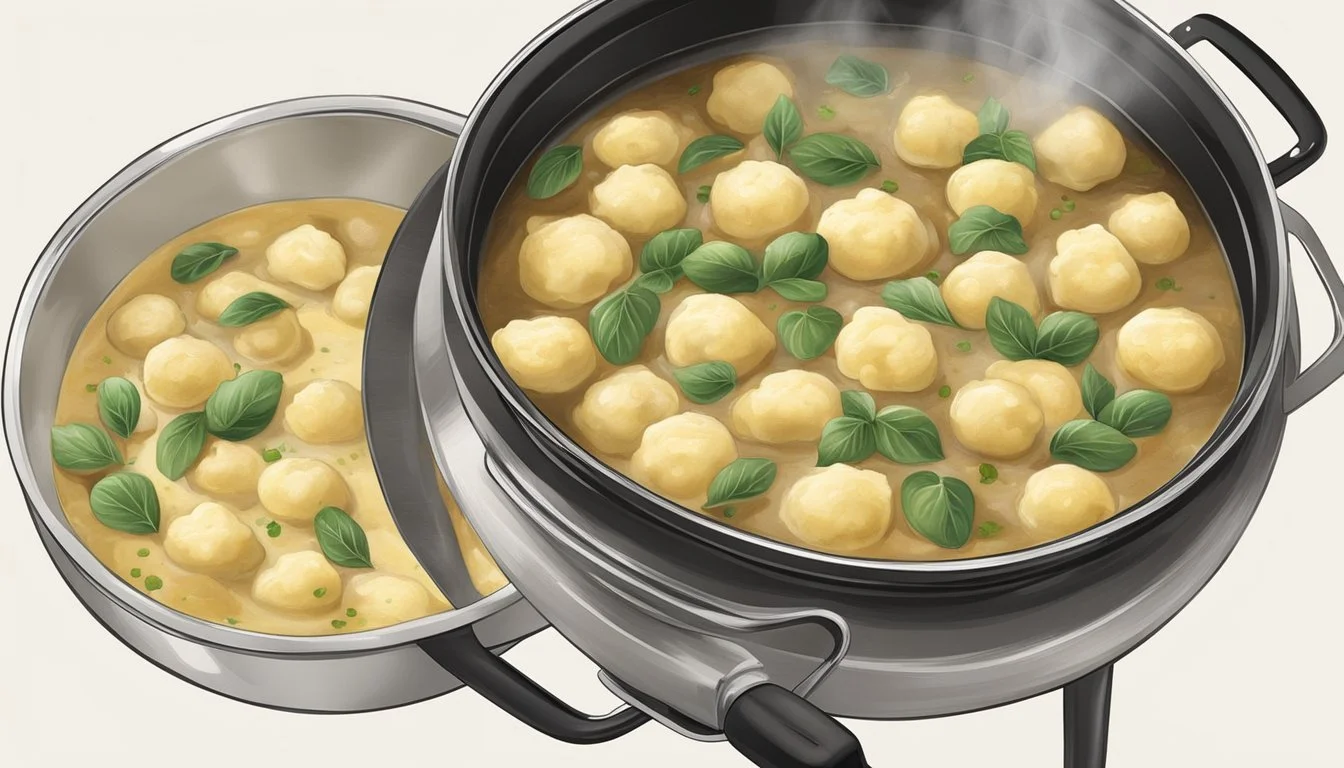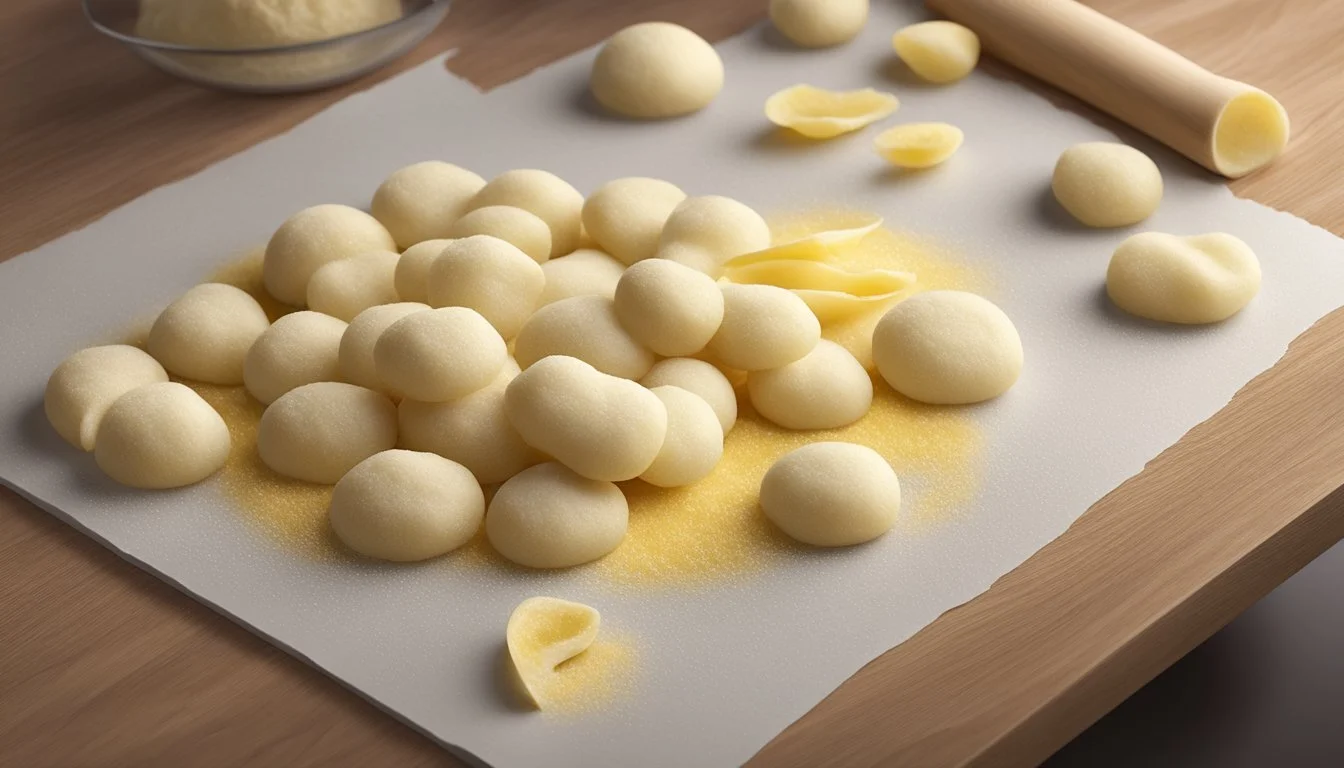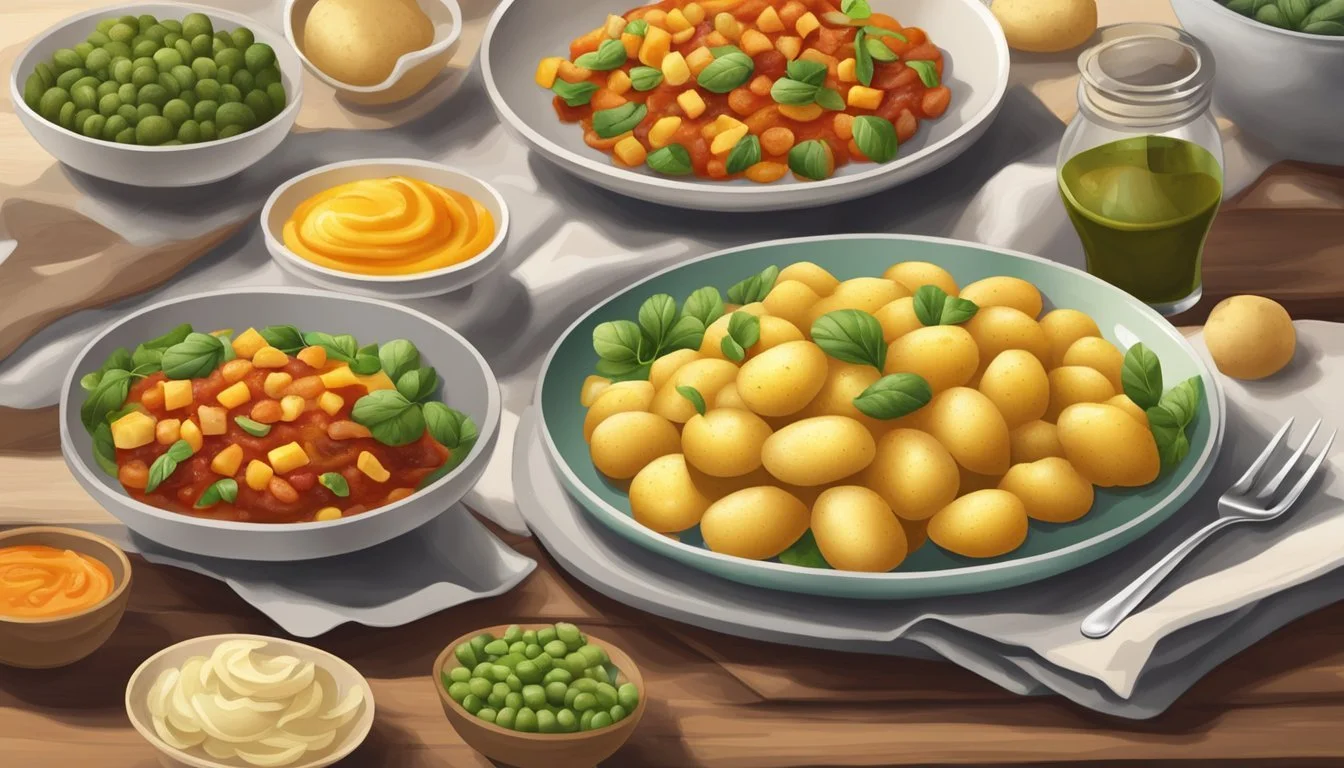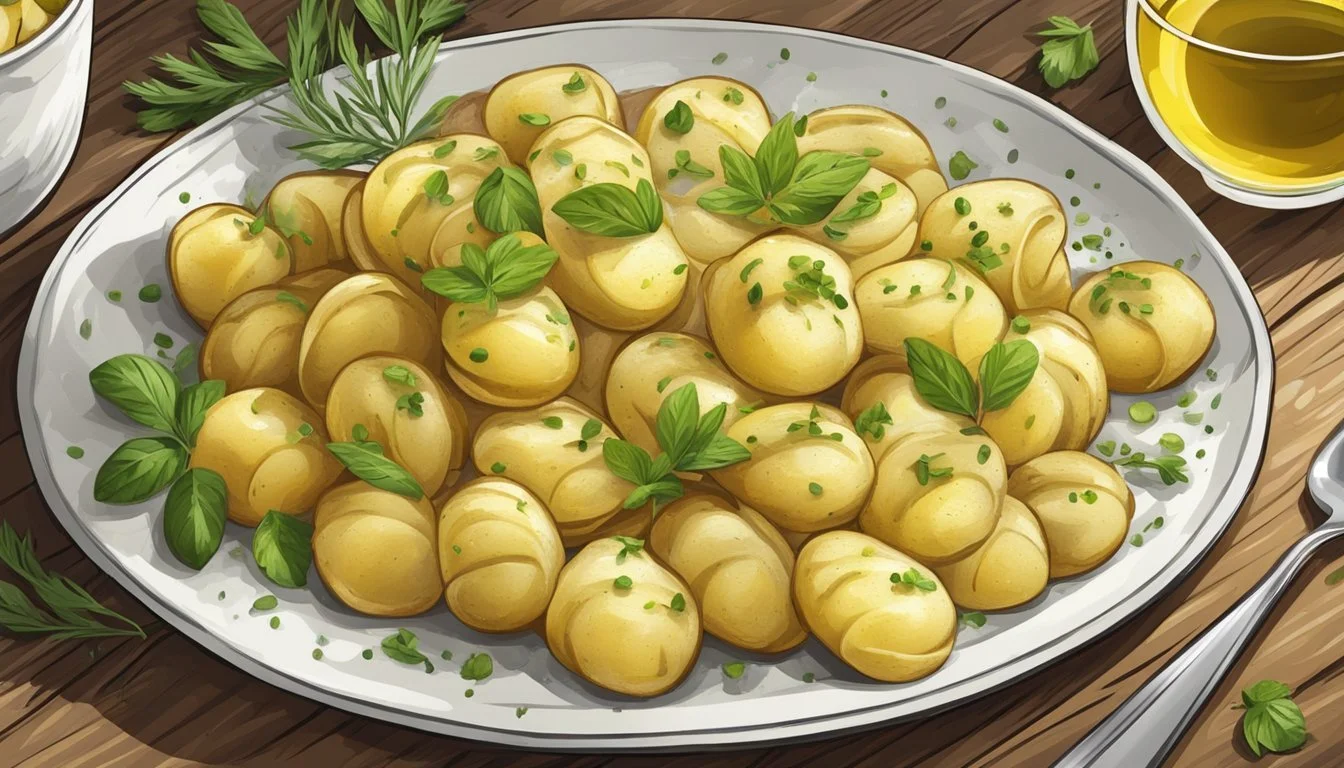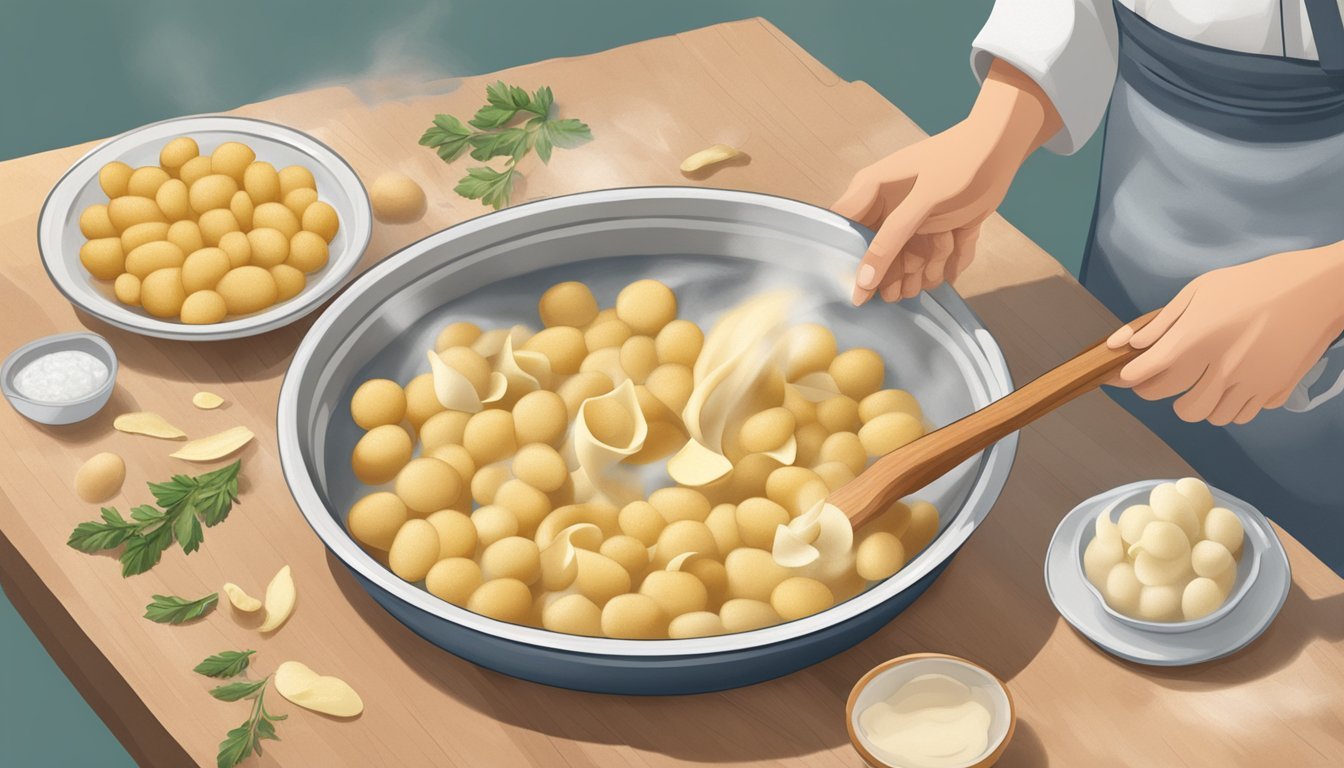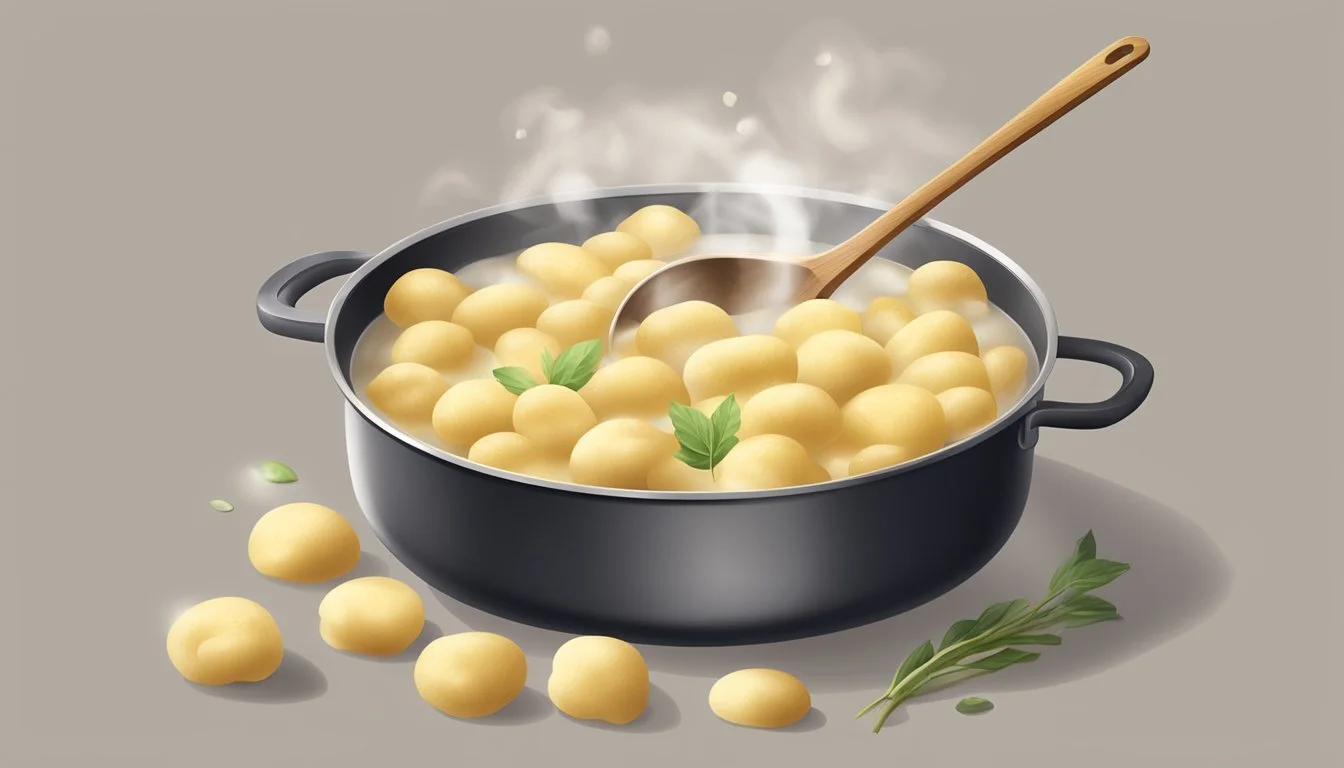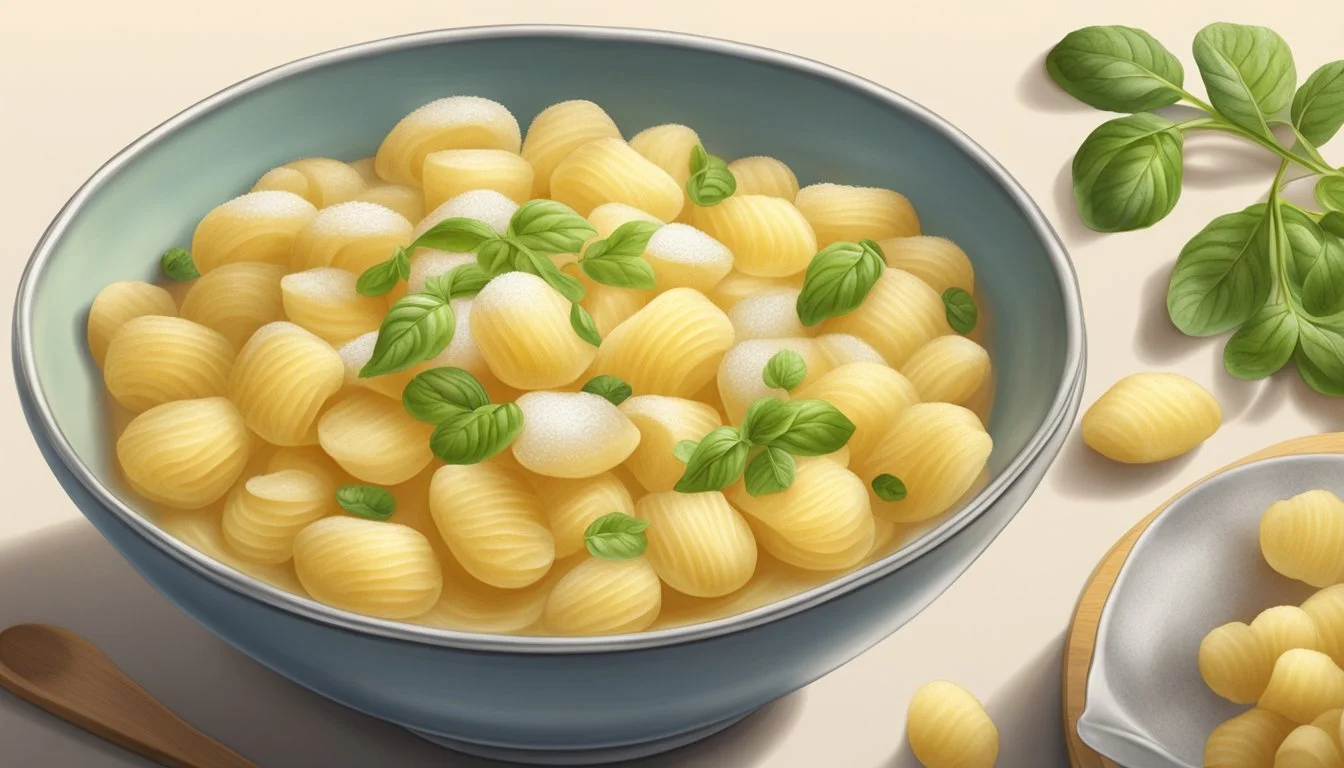Potato Peel Gnocchi
A Pillowy, Comforting Pasta Reinvented with Zero Waste
Potato gnocchi embodies the essence of comfort food, with its soft texture and heartwarming presence on the dinner table. Originating from Italy, this beloved pasta has made its way into the hearts and kitchens of food enthusiasts worldwide. Its simplicity and the use of widely available ingredients make homemade gnocchi an accessible endeavor for anyone seeking to create a handcrafted meal. With just potatoes, flour, and eggs, a pillowy culinary delight is within reach, turning a humble tuber into an exquisite dining experience.
The process of making potato gnocchi at home can be a rewarding one, allowing for the customization of textures and flavors. It involves cooking the potatoes until tender, then combining them with flour and eggs to form a dough. The dough is then rolled out, cut into small pieces, and often indented with a fork or rolled down a gnocchi board to create ridges that are perfect for catching delicious sauces. The resulting pasta is quick to cook, floating to the surface of boiling water in mere moments when ready.
While traditional gnocchi recipes call for the peeling of potatoes before or after boiling, the concept of 'potato peel gnocchi' adds an intriguing twist, potentially enhancing the nutritional value and taste profile of the dish. Utilizing the entire potato demonstrates a no-waste approach to cooking, as well as an appreciation for the natural flavors and textures that potato skins can contribute to the gnocchi. This approach not only resonates with sustainable cooking practices but also introduces a rustic and homemade quality to the dish, which is always a joy to both cook and savor.
The Essence of Potato Gnocchi
Potato gnocchi, a comfort food staple, has its roots steeped in Italian culinary tradition, requiring careful potato selection and precise flour integration for the perfect consistency.
Historical Background
Potato gnocchi's origin can be traced back to Northern Italy, with variations across different regions. It emerged as a pasta variant when potatoes were introduced to Italy, amalgamating with local ingredients and cooking practices.
Selecting the Right Potatoes
Choosing the ideal type of potato is crucial for gnocchi making. Yukon Gold and Russet potatoes are widely recommended for their high starch content and ability to hold shape. Yukon Gold potatoes yield a tender texture while Russets absorb less moisture, creating lighter gnocchi.
Yukon Gold: For a buttery, rich flavor.
Russet: Preferred for firmer gnocchi with a classic texture.
The Role of Flour in Gnocchi Making
The type of flour used affects the gnocchi's final texture.
All-purpose flour is commonly utilized for its availability and reliable results.
00 flour, finely milled and low in protein, is often favored for a silkier, more delicate texture.
A careful balance of flour to potato ensures gnocchi that are pillowy and light rather than dense.
Preparing Your Ingredients
The initial steps in making potato gnocchi involve careful preparation of the potatoes and dough to ensure a comforting, pillowy texture. Attention to detail is crucial in these foundational stages to achieve the desired quality in the final pasta.
Potato Preparation
One begins with choosing the right kind of potatoes, which should be starchy and have minimal moisture to prevent a gummy texture. Russet potatoes are typically a favoured choice. The potatoes need to be cleaned and then cooked until they are tender but not falling apart. Cooking methods vary; some people prefer to boil unpeeled potatoes, while others bake them to reduce moisture content. Here's a basic outline for preparing the potatoes:
Boiling: Rinse potatoes, then boil unpeeled in a pot of water with a pinch of salt until fork-tender.
Baking: Alternatively, preheat your oven to 400°F (200°C), pierce the potatoes with a fork, and bake directly on the oven rack.
Once cooked, the skin can be removed. The flesh is then mashed or passed through a potato ricer to ensure a fine, lump-free texture.
Creating the Perfect Dough
The mashed potatoes serve as the base of the gnocchi dough and must be seasoned with salt. It's essential they cool down a bit before incorporating other ingredients to prevent the egg from scrambling. Once at the right temperature, the preparer can add the beaten egg —or just egg yolks for a richer dough— and then carefully mix in the flour. The correct ratio and gentle handling are paramount to avoid a dense gnocchi. Flour should be added gradually to monitor the dough's consistency.
A typical ratio is as follows:
For every 450 grams of potatoes:
1 beaten egg or 2 egg yolks
2/3 cup of all-purpose flour
A pinch of salt
The dough is lightly kneaded just until it comes together; overworking can develop the gluten and make the gnocchi chewy rather than light. One seeks to achieve a dough that is smooth, pliable, and not sticky. Once these criteria are met, the dough is ready to be shaped into the classic gnocchi form.
Forming and Cooking Gnocchi
The transformation of simple ingredients into delightful gnocchi involves a careful process of shaping and cooking the dough to ensure a pillowy texture without falling apart.
Shaping the Gnocchi
Shaping gnocchi starts with the dough on a floured surface to prevent sticking. One should divide the dough into manageable sections, rolling each into a rope about 3/4 inches thick. A sharp knife is essential for cutting the ropes into bite-sized pieces, ideally 1 inch in length. For the distinctive ridges, each piece is then pressed and rolled over the tines of a fork or a gnocchi board, which helps the gnocchi hold sauce better upon serving.
Boiling to Perfection
Boiling gnocchi requires a large pot of salted water brought to a rolling boil. Introducing gnocchi gently into the boiling water is crucial, and one can do so in batches to avoid overcrowding. The gnocchi are cooked just until they float to the top, which typically takes 2-3 minutes, indicating they are tender and ready. A slotted spoon helps transfer the cooked gnocchi to a kitchen towel to drain excess moisture.
From Freezer to Boiling Water
To cook gnocchi from frozen, one does not need to thaw them first; they can go directly from the freezer into boiling water. The same visual cue applies: when they rise to the surface, they are ready. The boil time might be slightly longer compared to fresh gnocchi, and they should remain just as tender if frozen correctly on a well-floured cutting board before storing in airtight containers or bags.
Achieving the Ideal Texture
Achieving the ideal texture in potato gnocchi revolves around attention to the dough's consistency and the kneading stage. One strives for gnocchi that are tender yet maintain their structure, without becoming dense or gummy.
The Kneading Process
The key to tender gnocchi lies in the balance of kneading the dough just enough to combine ingredients while avoiding over-kneading which can make them tough. One starts with a base of ricotta or thoroughly mashed old potatoes, preferably the starchy yellow potatoes, which yield a lighter product. To this, one adds all-purpose flour sparingly, as it should be gently incorporated to form a cohesive, but not overly worked, dough.
A bench scraper or dough scraper should be used to fold the dough over itself, applying pressure just until the flour is absorbed. They usually achieve the right texture through less than five minutes of kneading, assuming they start with a well-proportioned mixture. The dough should feel pliable and smooth, not sticky or overly resilient.
Avoiding Common Pitfalls
A common pitfall is making the gnocchi dough too dense, which results in a gummy and heavy final product. This often occurs when too much flour is added. The dough should be soft and slightly sticky to the touch, but not so wet that it adheres to hands or surfaces. If it sticks, chefs might add more flour, a teaspoon at a time, until the dough just reaches the correct texture.
The chefs ensure the potatoes are properly cooked — fully tender but not waterlogged, which could necessitate additional flour, leading to that undesired dense texture. They use potatoes that are dry and cool, which helps in avoiding a gummy dough.
By closely monitoring the kneading process and avoiding the temptation to introduce too much flour or over-work the dough, one can produce gnocchi with the sought-after pillowy and comforting texture.
Pairing Gnocchi with Sauces
Choosing the right sauce can transform potato peel gnocchi from a simple dish into a sumptuous meal. Textures and flavors are crucial considerations when pairing gnocchi with sauces.
Classic Sauce Recommendations
Potato gnocchi, with its pillowy texture and subtle flavor, serves as the perfect canvas for classic Italian sauces. Here are some time-honored combinations:
Tomato Basil Sauce: A simple tomato sauce with bright acidity and herbal freshness from basil can enhance the gnocchi without overshadowing its taste.
Brown Butter and Sage Sauce: The richness of butter sizzled until golden, coupled with the aromatic sage, complements the gnocchi by adding depth to its flavor profile.
Marinara Sauce: This authentic sauce, with its blend of fresh herbs, garlic, and tomatoes, offers a lighter option that lets the potato gnocchi shine.
Sauce Type Main Components Gnocchi Pairing Benefit Tomato Basil Tomatoes, basil, olive oil Highlights gnocchi texture Brown Butter and Sage Butter, sage Adds a nutty, aromatic flavor Marinara Tomatoes, herbs, garlic Compliments with simple, fresh flavors
Experimenting with Contemporary Flavors
For those looking to venture beyond the classics, contemporary flavors offer a creative twist to gnocchi pairings.
Basil Pesto Sauce: With its bold combination of basil, Parmesan cheese, and pine nuts, a vibrant basil pesto sauce delivers a burst of flavor that matches well with the earthiness of potato peel gnocchi.
Pumpkin Sage Sauce: Incorporating autumnal elements such as pumpkin puree and sage can introduce a seasonal twist, pairing exceptionally well with homemade Italian potato gnocchi.
Sauce Type Key Ingredients Contemporary Appeal Basil Pesto Basil, pine nuts, Parmesan Offers a fresh, zesty experience Pumpkin Sage Pumpkin, sage, Parmesan Adds a warm, comforting dimension
By considering these sauce pairings, one can elevate their gnocchi dish to a culinary delight that resonates with both tradition and modern palates.
Serving and Presentation
When serving potato peel gnocchi, presentation can be just as important as taste. The way one plates and garnishes the dish can significantly affect its appeal to friends and family.
Plating Techniques
For gnocchi, simplicity is key. They should be served in a shallow serving dish that gives them space without crowding. A basic method is to place them delicately in the center, allowing the pillowy texture and shape to stand out. If serving with a sauce, consider ladling it onto the dish first and then nestling the gnocchi on top to avoid them looking submerged.
Garnishes and Finishing Touches
Garnishes should complement both the flavor and the aesthetics of the dish. A light dusting of Parmigiano, Grana Padano, or Parmesan cheese adds depth and a hint of saltiness. For a touch of color and freshness, a few basil leaves or finely chopped parsley can be sprinkled on top. Just before serving to your guests, a final drizzle of high-quality olive oil can seal in the flavors and add a pleasant sheen.
Storing and Reheating
Potato peel gnocchi, with its delicate texture, requires careful storage and reheating to maintain its pillowy quality. Optimal methods can ensure that this comforting pasta dish retains its taste and texture.
Preserving Freshness
To help maintain the freshness of potato peel gnocchi before cooking, one can freeze the raw dough. After shaping, gnocchi should be placed on a baking sheet lined with a kitchen towel, not touching, and then frozen until solid. Once frozen, the gnocchi should be transferred to an airtight container or freezer bag and can be kept frozen for up to 2 months.
Fresh gnocchi storage:
Before cooking: Freeze individually, then store in airtight container.
After cooking: Cool down, then place in a container, drizzle with olive oil to prevent sticking.
Best Practices for Leftovers
When storing cooked potato peel gnocchi, it's ideal to cool them to room temperature before placing them in an airtight container. A small drizzle of olive oil can prevent the pieces from sticking together. Stored leftovers can last up to 2 days in the refrigerator.
To reheat leftovers, whether refrigerated or frozen, it is recommended to bring a pot of water to a rolling boil. Then, the gnocchi should be briefly submerged in the boiling water, generally for about 30 seconds to 1 minute, until they float to the surface, before being drained and served with the desired sauce or toppings.
Reheating steps:
From the fridge: Bring to boil, cook 30-60 seconds, drain.
From the freezer: Do not thaw, cook directly in boiling water until they float.
Advanced Tips and Variations
Mastering homemade potato gnocchi requires attention to detail and a willingness to experiment with ingredients and techniques. This section offers expert advice and intriguing twists on the classic gnocchi recipe.
Gnocchi-Making Pro Tips
When making homemade potato gnocchi, chefs prioritize the texture of the potatoes. One should opt for starchy varieties and consider baking them to minimize moisture, which leads to lighter, airier gnocchi. After baking, a potato ricer is invaluable for creating a fine, consistent mash without overworking the dough.
00 flour is a fine-ground flour that's typically used in gnocchi recipes for its ability to create a delicate dough, enhancing the pillowy nature of the final product. However, all-purpose flour can be used if 00 flour is not available.
Furthermore, overly working the dough can result in dense gnocchi. They should handle the dough just enough to bring the ingredients together. Once the dough is ready, they should use a gnocchi board or the tines of a fork to create ridges that allow sauces to adhere better.
Creative Variations and Substitutions
For those looking to break from tradition, ricotta gnocchi offers a lighter alternative to potato-based gnocchi. They can replace the potato with the same weight in ricotta, which delivers a softer and often less dense dumpling.
Additionally, introducing seasonal herbs and spices into the dough can infuse the gnocchi with unique flavors, transforming the dish with every variation. A popular choice is to incorporate fine herbs like sage or rosemary for a subtle, aromatic twist.
Baked gnocchi is a variation that combines the comforts of soft dumplings with the pleasures of a gratin. Chefs can assemble their gnocchi in a baking dish, top it with cheese and sauce, and bake until bubbly and golden.
For gluten-sensitive diners, standard 00 flour can be replaced with gluten-free blends. However, the texture may vary, and adjustments in the moisture of the dough might be necessary.
In summary, whether they are sticking to a step-by-step recipe or venturing into their own variations, chefs should remember that the secret to perfect gnocchi lies in the balance of ingredients, the lightness of touch, and the passion for experimenting with flavors.
Troubleshooting Common Issues
In this section, the reader will find solutions to common problems encountered when making potato gnocchi, ensuring their final dish is soft and delicious.
FAQs
Q: Why is my gnocchi falling apart?
A: Gnocchi may disintegrate if the potatoes are too wet or if they have not been properly cooled and dried. Make sure to bake or boil the potatoes just until they are tender and let them dry before preparation.
Q: What factors could lead to gummy gnocchi?
A: Overworked dough is often to blame for a gummy texture. Knead the dough just enough to incorporate the ingredients. Excess kneading develops the gluten, leading to gummy gnocchi.
Q: How to avoid dense gnocchi?
A: Dense gnocchi usually results from using too much flour or from the dough being overmixed. Use just enough flour to bring the dough together and handle it as little as possible.
Expert Solutions
To address falling apart during cooking:
Ensure proper potato preparation: Peel potatoes while warm and then use a ricer for a smooth texture.
Balance moisture with flour: If the dough feels too sticky, incrementally add a bit more flour.
When facing gummy gnocchi, consider:
The variables of potato type and cook method: Starchy potatoes are best, and baking is preferred.
Implement a template for mixing: Gently fold the dough until just combined, avoiding overhandling.
For avoiding dense gnocchi:
Monitor the dough's texture: It should be soft to the touch but not sticky.
Test cook a piece: If it's dense, gently work in a touch more riced potato to lighten the mixture.
By understanding the causes of these issues and carefully following the recommended solutions, one can master the art of making light and fluffy gnocchi.
Conclusion
Potato gnocchi, an Italian culinary staple, offers a comforting and satisfying experience with its pillowy softness and delightful taste. The process of making homemade gnocchi may seem daunting at first, but with simple steps and a bit of patience, it unravels as a rewarding endeavor.
Italian nonnas have long sworn by the importance of using the right potatoes and incorporating a light touch during kneading to prevent dense gnocchi. A well-balanced ratio of potato to flour is crucial for the perfect texture, and a single egg can act as a binding agent, adding to the gnocchi's delicate structure.
Cooking gnocchi requires attention—it should be brief. They are ready once they float to the surface, signifying their readiness to be coated with the chosen sauce. The indentations, whether formed by a fork or a specialized board, are not merely ornamental; they serve a purpose, holding onto sauces and maximizing flavor with each bite.
In conclusion, they should cherish the process of creating homemade gnocchi as much as they enjoy its taste. It embraces tradition, the joy of cooking from scratch, and the versatility of this beloved pasta. Whether following an Italian nonna’s recipe or applying personal twists, gnocchi stands out as a testament to the simple yet profound pleasures of home cooking.

